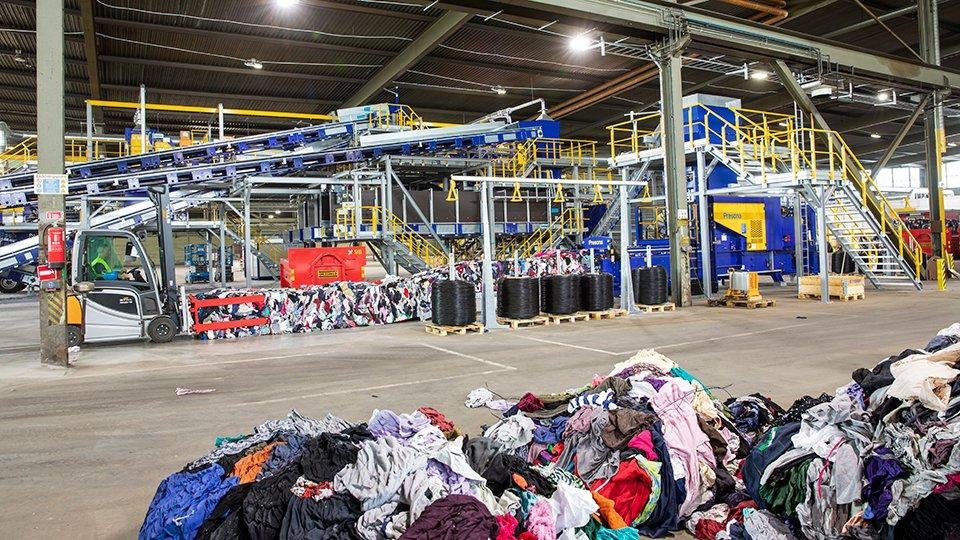Textile Recycling Market Key Players and Competitive Landscape Analysis

The global push toward sustainability and waste reduction has fueled significant momentum in the Textile Recycling Market. As environmental regulations tighten and consumer awareness grows, the market is attracting diverse players ranging from established waste management companies to innovative textile startups and global fashion brands. This dynamic environment has given rise to a highly competitive and rapidly evolving landscape.
This article explores the major companies shaping the Textile Recycling Market, their strategies, technological innovations, and how competition is driving growth and transformation in this essential segment of the circular economy.
Overview of the Competitive Landscape
The Textile Recycling Market includes a wide spectrum of stakeholders:
-
Traditional recyclers specializing in mechanical processes.
-
Chemical recycling pioneers focused on fiber-to-fiber regeneration.
-
Fashion brands and retailers investing in circular models.
-
Technology providers enabling smart sorting and fiber analysis.
-
Government and nonprofit alliances promoting policy and awareness.
This diversity creates a fertile ground for partnerships, innovation, and regional specialization, especially as markets in Europe, North America, and Asia-Pacific develop at different paces.
Key Players in the Global Textile Recycling Market
1. Renewcell (Sweden)
-
Known for its patented Circulose® technology, Renewcell chemically recycles worn-out cotton and viscose textiles into new biodegradable fiber pulp.
-
Partners with global brands like H&M and Levi’s.
-
Operates one of the world’s first industrial-scale chemical textile recycling plants.
2. Worn Again Technologies (UK)
-
Specializes in chemical recycling of polyester and cellulose blends.
-
Converts textiles into virgin-equivalent raw materials.
-
Backed by global players like H&M and Sulzer Chemtech.
3. Lenzing AG (Austria)
-
A pioneer in sustainable fiber production, Lenzing integrates recycling into its TENCEL™ and REFIBRA™ branded fibers.
-
Utilizes closed-loop systems and low-impact chemical processing.
4. I:CO (Germany)
-
Short for “I:Collect,” the company provides global collection and reuse services for used garments and shoes.
-
Partners with over 60 fashion retailers to collect textiles through in-store bins.
-
Focuses on reuse, recycling, and energy recovery.
5. Bank & Vogue (Canada/USA)
-
A major player in second-hand clothing and post-consumer textile waste logistics.
-
Operates both collection and resale of used textiles, with a strong presence in North America.
6. Unifi, Inc. (USA)
-
Producer of REPREVE®, a recycled fiber made primarily from post-consumer plastic bottles and textile waste.
-
Collaborates with brands like Nike and Adidas for sustainable performance wear.
7. The Boer Group (Netherlands)
-
Manages textile collection, sorting, and processing facilities in Europe.
-
Operates with a focus on textile reuse and resale before material recovery.
Regional Leaders and Market Dynamics
Europe
-
The European market is the most advanced, supported by strong regulations, waste directives, and circular economy targets.
-
Countries like Germany, the Netherlands, and Sweden are home to top recycling firms and pilot initiatives.
-
The EU’s Extended Producer Responsibility (EPR) and Green Deal are driving innovation and compliance.
North America
-
Gaining momentum through partnerships between recyclers and fashion brands.
-
Growth is led by the U.S. and Canada, where consumers are increasingly eco-conscious and willing to pay for sustainable fashion.
Asia-Pacific
-
A growing hub for textile recycling, especially post-industrial waste.
-
Countries like India and China are advancing mechanical recycling at scale but lag in chemical recycling infrastructure.
-
Japan and South Korea are investing in advanced fiber recovery technologies.
Competitive Strategies and Market Positioning
Key players differentiate themselves through a variety of strategies:
-
Technology and Innovation: Companies like Worn Again and Renewcell lead with patented recycling technologies that transform blended or degraded textiles into virgin-quality inputs.
-
Vertical Integration: Firms such as Lenzing control the entire production and recycling chain, ensuring quality and transparency.
-
Partnership Models: I:CO and Bank & Vogue collaborate with brands and municipalities to establish closed-loop collection systems.
-
Brand Alliances: Many recyclers have forged strategic alliances with major fashion brands like Adidas, H&M, Zara, and Patagonia to integrate recycling into the supply chain.
-
Scalability and Automation: AI-driven sorting and automation allow companies to process large volumes with reduced labor, improving margins and competitiveness.
Market Entry and Innovation by Startups
Several startups are also disrupting the Textile Recycling Market by addressing niche gaps and adopting flexible, tech-driven models:
-
Circular Systems – Focuses on converting agricultural waste and textile scraps into high-quality fibers like Agraloop™.
-
Infinited Fiber Company – Produces Infinna™, a regenerated textile fiber from cellulose-rich waste.
-
Resortecs – Provides dissolvable stitching solutions that make garment disassembly easier for recycling.
These startups play a key role in piloting new solutions and attracting venture capital into the sustainability space.
Outlook and Competitive Evolution
The Textile Recycling Market is expected to grow at a robust pace, driven by:
-
Consumer demand for eco-friendly products.
-
Government mandates for textile waste reduction.
-
Increased investment in recycling R&D.
-
Growing pressure on brands to reduce environmental impact.
In this landscape, competitive advantage will go to players that can:
-
Achieve scale while maintaining quality.
-
Navigate regulatory changes across regions.
-
Invest in innovation and cross-sector collaboration.
-
Offer transparency and traceability to meet consumer expectations.
Conclusion
The Textile Recycling Market is no longer a niche segment—it is a fast-expanding global industry shaped by a diverse and competitive landscape. From traditional recyclers to tech startups and global brands, the market is filled with players pushing the boundaries of what’s possible in textile waste recovery and circular fashion.





